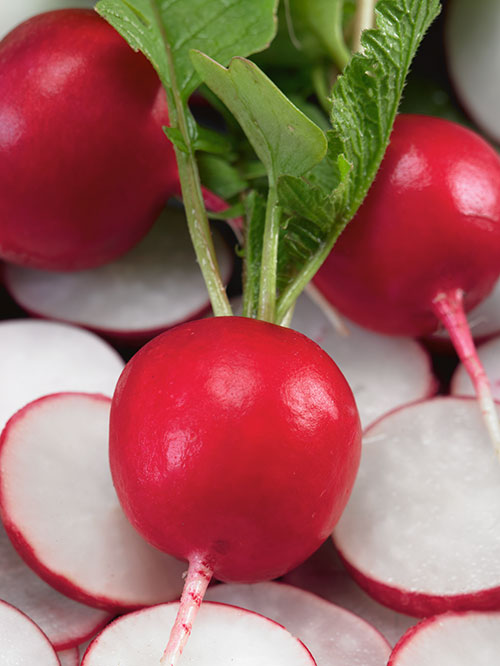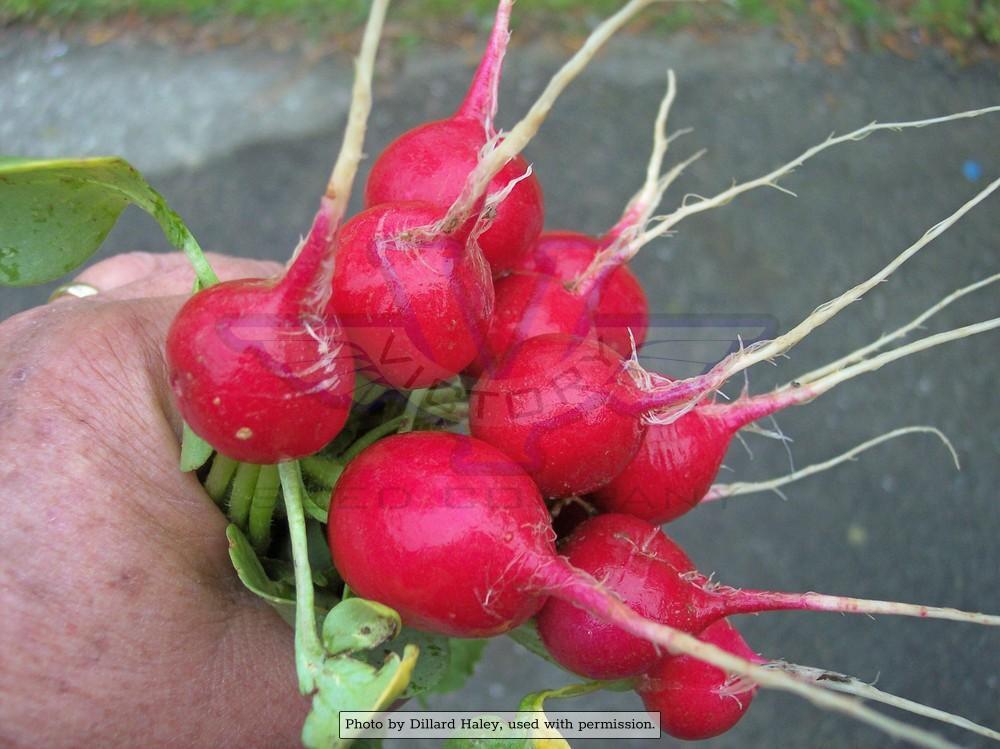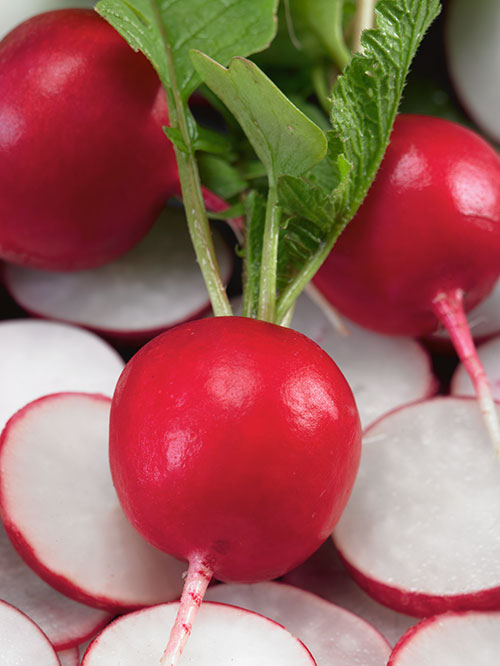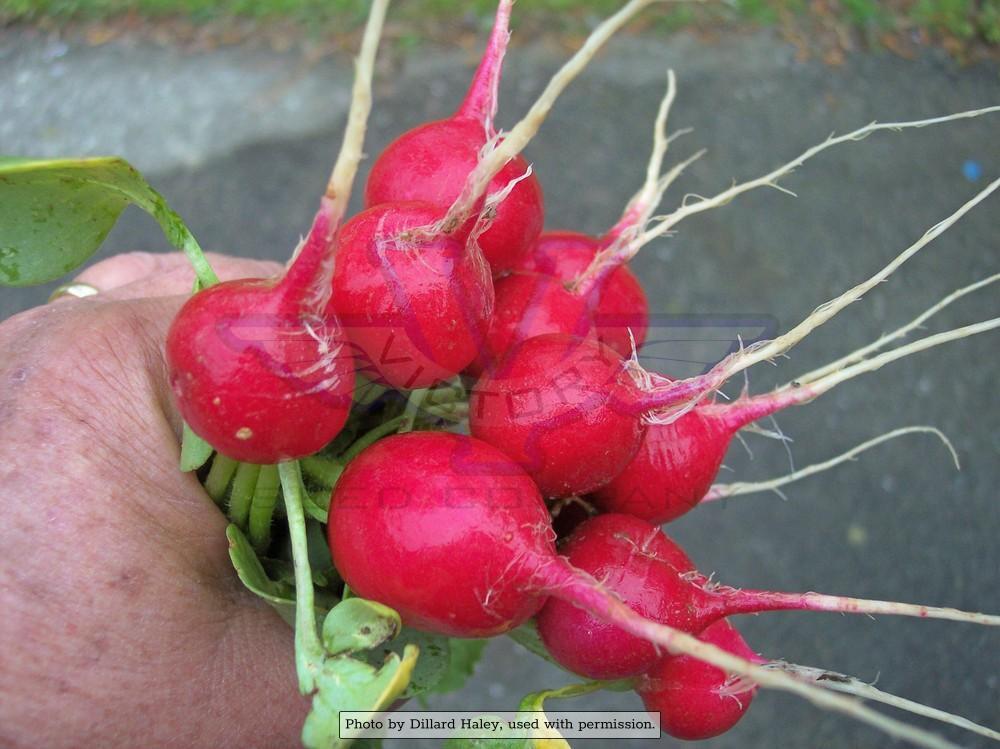Early Scarlet Globe Radish
Early Scarlet Globe Radish
Regular price
$2.95 USD
Regular price
Sale price
$2.95 USD
Unit price
per
Shipping calculated at checkout.
Couldn't load pickup availability
Early Scarlet Globe
20 days — As its name implies, 'Early Scarlet Globe' goes from seed to table very quickly, maturing in as little as twenty days. It has bright red skin and crisp, white flesh. This variety also does well in frames and greenhouses for forcing.
In regards to the history of 'Early Scarlet Globe', it first appeared for sale in American, with very little fanfare, in the 1885 seed catalog of James Vick of Rochester, New York. He simply stated, "This new variety is one of the finest for forcing and market gardening purposes." A few years later, most of the New England seed companies were offering it.
When Robert Buist introduced it to their customers in their 1888 seed annual, they described it as follows:
"A new and very beautiful German variety, of globe shape, brilliant scarlet color, short-leaved, and very early; a desirable forcing variety. We regard it as one of the very best market varieties. Its very beautiful and distinct appearance will always insure its sale."
Over 100 years later, 'Early Scarlet Globe' is still one of the most popular radish varieties we offer. Each packet contains three grams.


Planting Instructions:
Radishes are generally very easy to grow. They are best when sown in spring or late summer but with care can be planted from February to September. Plant small amounts, 5 to 7 days apart for a steady supply.
Plant seeds directly outdoors as soon as soil can be worked. Plant ½ inch deep, ½ inch apart in rows at least 8 inches apart. Firm soil and keep moist until seedlings appear. Radishes have shallow root systems so do keep them watered.
Harvest as soon as roots reach desired size.
Plant seeds directly outdoors as soon as soil can be worked. Plant ½ inch deep, ½ inch apart in rows at least 8 inches apart. Firm soil and keep moist until seedlings appear. Radishes have shallow root systems so do keep them watered.
Harvest as soon as roots reach desired size.
Informational Resources:
- "Vick's Floral Guide, James Vick, Rochester, New York, 1885.
- "Buist's Almanac and Garden Manual," Robert Buist, Jr., Philadelphia, Pennsylvania, 1888.
Explore our vegetable collections:
[ Artichokes | Asparagus | Beans | Beets | Broccoli | Sorghums | Brussels Sprouts | Cabbage | Cantaloupe | Carrots | Cauliflower | Celery | Collard Greens | Corn | Cucumber | Eggplant | Endives | Gourds | Kale | Kohlrabi | Leeks | Lettuce | Mesclun Mix | Mustard Greens | Okra | Onions | Parsley | Edible Pod Peas | Garden Peas | South Peas | Hot Peppers | Mild Peppers | Pumpkins | Radishes | Rapini | Rhubarb | Salad Greens | Salsify | Summer Squash | Winter Squash | Swiss Chard | Tomatillo | Tomatoes | Dwarf Tomato Project | Turnips | Watermelons ]


